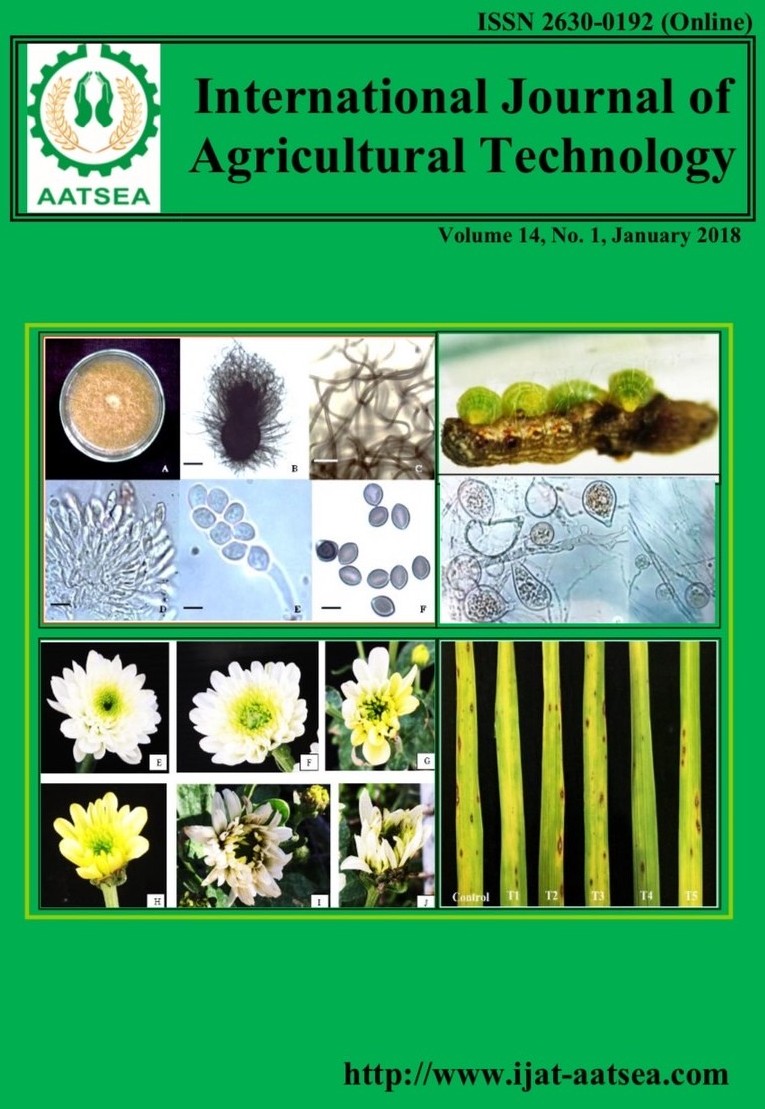Fate of Certain Pesticides in Presence of Biochar in Cultivated Soil
Main Article Content
Abstract
Biochar from date palm by product was produced through slow pyrolysis at 450℃ done in a batch retort. The identification of the chemical composition of biochar by using Fourier Transform Infrared spectroscopy, (FTIR) and elemental analysis show that there are function group found around the biochar structure. Its physical characterization by using X-Ray Diffraction (XRD). Surface area (BET analyse) found to be 96.4 m2/gm and its Particle Size Distribution (DLS) had mean size of 172.5 nm and 41.4 nm width. Biochar-amended soil were prepared by thoroughly mixing the soil with accurately weighed of biochar of percentages of 0, 10 and 25 % (w/w). Onion was plant in a sand soil. Two pesticides (Acetamprid and Oxamyl) were applied once after 60 days from planting. Residues were extracted inside onion blubs after 1, 3, 7 and 14 days from application. It is clearly proved that the half-life time of both pesticides are increased in the soil contain biochar. In addition to the leaching of pesticides from the agricultural soils to the run out water show statistically significant as the soil contain biochar had no pesticide residues after application.
Article Details

This work is licensed under a Creative Commons Attribution-NonCommercial-NoDerivatives 4.0 International License.
References
Ahmed, Y. M. (1989). Degradation of methomly on clay and sandy soil. 3rd Natural Conference of pests and Diseases of Vegetables and Fruits in Egypt and Arab Country, Ismailia Egypt 647-658.
Ahmad, M., Rajapaksha, A. U., Lim, J. E., Zhang, M., Bolan, N., Mohan, D., Vithanage, M., Lee, S. S. and Ok, Y. S. (2014). Biochar as a sorbent for contaminant management in soil and water: a review. Chemosphere 99:19-33.
Diez, M. C., Levio, M., Rubilar, O. and Gallardo, F. (2013). Biochar as partial replacement of peat in a biomixture Formulated with 3 types of soils to degrade pesticides. III Symposium on agricultural and agro industrial waste management12th to 14th march 2013- sao pedro, sao paulo state, brazil.
EL-adawy, A.M., EL-Barogy, E.S., Naiem, M.H.S., Essa, M.A.A., EL-Hamawi, M.H. and EL-Sharkawy, T.A. (2001). Factors affecting the natural occurrence of some insect biocontrol agent in cultivated soil in Ismailia governorat. Egypt Journal of Agriculture Research 79:419-430.
Fathia, I. M., Shawir, M. S. and Morsy, F. A. (1983). Factors influencing organophosphrous insecticides resistance in the Egyptian cotton leaf worm. Proceeding of International Conference Environment Hazchemi Agrochemstry 11:954-967.
Hagner, M. (2013). Potential of the slow pyrolysis products birch tar oil, wood vinegar and biochar in sustainable plant protection: pesticidal effects, soil improvement and environmental risks. Thesis, University of Helsinki, Faculty of Biological and Environmental Sciences, Department of Environmental Sciences.
Hagner, M., Hallman, S., Jauhiainen, L., Kemppainen, R., Ramo, S., Tiilikkala, K. and Setala, H. (2015). Birch (Betula spp.) wood biochar is a potential soil amendment to reduce glyphosate leaching in agricultural soils. Journal of Environmental Management 164:46-52.
Holt, R. F. and Pease, H. L. (1976). Determination of Oxamyl residues using flame photometric gas chromatography .Journal of agriculture and food chemistry 24:263-266.
Jones, D. L., Edward, J. G. and Murphy, D. V. (2011). Biochar mediated alterations in herbicide breakdown and leaching in soil. Soil Biology & Biochemistry 43:804-813.
Masanori, T. and Gomyo, T. (1994). Residue analytical method of insecticide N-25 in crops. Parent method. Rotary report No. EC-521, Nippon Soda Co., LTD. Tokyo, Japan.
Mishra, R. K., Adholeya, A. and Sardana H. R. (2012). Integrated Pest Management: strategies for onion and garlic. New Delhi: The Energy and Resources Institute (TERI).
Sun, H. W., Xu, J., Yang, S. H., Liu, G. L. and Dai, S. G. (2004). Plant uptake ofaldicarb from contaminated soil and its enhanced degradation in therhizosphere.Chemosphere 54:569-574.
Tomizawa, M. and Casida, J.E. (2003). Selective toxicity of neonicotinoids attributable to specificity of insect and mammalian nicotinic receptors. Annual Review of Entomology 48:339-364.
Ogbonnaya, U. and Semple, K. T. (2013). Impact of Biochar on Organic Contaminants in Soil: A Tool forMitigating Risk?. Journal of Agronomy 3:349-375.
Yang, X. B., Ying, G. G., Peng, P. A., Wang, L., Zhao, J. L., Zhang, L. J., Yuan, P. and He, H. P. (2010). Influence of biochars on plant uptake and dissipation of two pesticides in an agricultural soil. Journal of Agricultural Food Chemistry 58:7915-7921.


